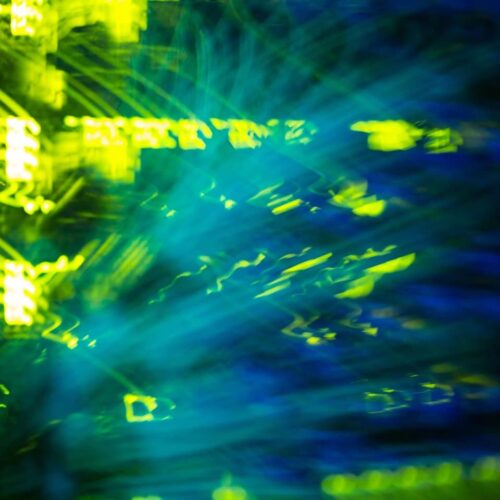A power-hungry internet that requires less electricity. High-powered computers that rival NASA’s. Broadband speeds that could boggle the mind.
The chip achieved dizzying speeds by using a single laser and a specialized light-creating device to transmit data over fiber optic cables, material scientists said. The amount of data researchers sent, roughly 1.84 petabytes, far exceeds the roughly 1 petabyte of data transmitted over the entire internet every second. (A petabyte of data is roughly a million gigabytes.)
If commercialized, experts said, the chip could spark faster broadband speeds and computing power for consumers. Most notably, it would reduce the amount of energy it takes to run the internet, which accounts for roughly 10 percent of global electricity consumption and is growing.
“The internet is a really, really huge energy consumer,” Leif Katsuo Oxenløwe, a lead researcher on the study, said in an interview. “We need to be able to support a continuous growth of the internet, but we need to come up with new energy efficient technologies.”
Scientists, telecom executives and big tech corporations are constantly clamoring for a faster, more efficient internet. Many have tried to increase the amount of data that can be transferred. Others are improving latency, which refers to the amount of time it takes for data to respond to commands.
The chip tested by Scandinavian researchers would drastically help the amount of data the internet could transfer, Oxenløwe and material scientists said.
The chip works by using a single laser to create a rainbow of colors through a device called a “frequency comb.” Those arrays of light carry data through fiber optic cables in a faster, less energy consuming manner.
“It’s like … you’re on the New Jersey Turnpike and all those cars are linked together in a way so that they move in unison,” said John Ballato, a material science professor at Clemson University, who was not involved in the study.
During the experiment, Swedish and Danish researchers achieved lightning-fast data transfer speeds of 1.84 petabytes a second using the single laser-powered chip. Normally, over 1,000 lasers would be required to achieve that performance, experts said.
Ballato said the Scandinavian team’s speed results are exciting. “It’s not very often that something like that comes along,” he said.
The benefit is the chip’s simple design, he said. Using that, along with a fiber optic cable that is specialized, but not incredibly hard to get, makes it possible companies might use this method to transmit data in the future, he said. “This is not a one-off thing,” he said. “It’s not a crazy exotic you think we’ll make once and never again.”
He acknowledged, however, that the design is still in the research phase and could take years to become mainstream. It’s unlikely, he added, that internet companies will tear up fiber optic cables powering the internet that lay under the sea and replace them using this method.
It’s more likely, he said, that this technology will be used in efforts to roll out local, shorter distance, 5G networks that data-hungry advances, such as autonomous vehicles, will need to rely on to function better.
“Everybody is clamoring for 5g,” he said. “That’s an extraordinarily [large amount] of power and bandwidth, capacity-hungry proposition.”





